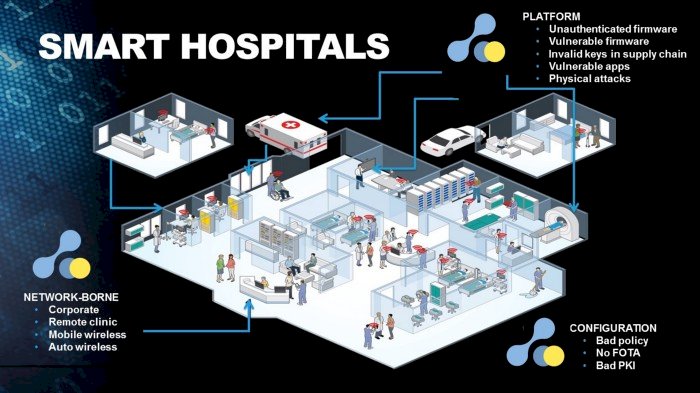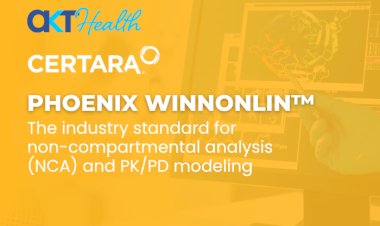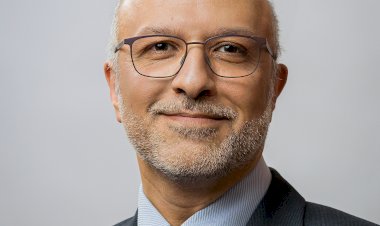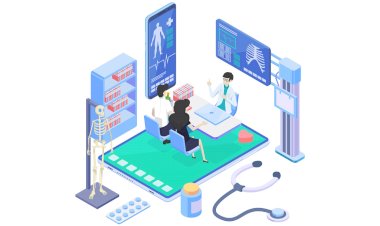Cutting-edge Technologies to Transform Healthcare Industry
An artificial Intelligence technology making future development as it could replace our general practitioners within the next decade due to the astronomical rise in the cost of healthcare.
The potential to change the face of healthcare is by two cutting edge technology that are Blockchain and Artificial Intelligence. As we know it by improving the quality and reducing costs through improved efficiency.
Role of Artificial Intelligence:
In the era of smart phones, I am sure all user of these device are already aware, least little familiar with artificial Intelligence primarily through virtual assistants, such as Siri, Alexa, and Google. Artificial Intelligence makes automate repetitive learning and discovery through data after initially being set up by a human being. Artificial intelligence adapts through progressive learning algorithms. The more we use these the more they become accurate. These are still very much first-generation products and many of these are unable to go beyond a single threaded conversation, but in the medical field, artificial intelligence based on object recognition, image classification and deep learning is now being used to spot cancer on MRIs with the same accuracy as high trained radiologist. This medical artificial intelligence has already gone beyond our helpful assistances.
An artificial Intelligence technology making future development as it could replace our general practitioners within the next decade due to the astronomical rise in the cost of healthcare. It could become indispensable to our current doctors, allowing them to reach the right diagnosis quicker and with greater accuracy. In recent newly innovated robots are used to train medical students is made.
The combo of blockchain, Artificial Intelligence, deep learning could personalize medicine in a truly amazing way, tailoring disease treatments and health recommendations based on a patient’s medical history, genetic lineage, stress levels, current diet, geography, atmospheric conditions and past medical conditions. Scientific advancements in medical robots including therapeutic demand by hospitals to deliver high quality care without ballooning costs may result in faster market adoption on a massive scale.
Real Time applications:
Almost all the nation’s large health plans are currently implementing or actively planning to spin up a blockchain solution for at least some of their administrative needs, setting up the potential for broader adoption in the near future. Activity in the payer space is quickly outpacing interest on the provider side. Sixty-eight percent of all size payers are aiming to take a blockchain approach to at least one business problem by the end of 2018, while just 12 percent of providers are planning to do the same.
As with financial services and banking, the payer-facing use cases for operational efficiencies in back-end processes may be clearer at the moment, leading to speedier adoption rates. Adding a layer of artificial intelligence to this blockchain substrata could also drastically improve the way healthcare providers extract actionable insights from big data that is fundamentally more trustworthy than before.
If a patient himself has verified that his record is complete, up-to-date, and accurate on a permissioned blockchain, artificial intelligence algorithms that stratify risk, suggest diagnoses, or identify gaps in care may be more efficient and effective.
Need of these technologies:
A blockchain-based system will enable unprecedented collaboration, bolstering innovation in medical research and the execution of larger healthcare concepts such as precision medicine and population health management.
Blockchain technology may not be the panacea for healthcare industry challenges needs but it holds the potential to save billions of dollars by optimizing current workflows and disintermediating some high-cost gatekeepers.
The confluence of blockchain and artificial intelligence is not too far away. By 2025, it expected the healthcare industry to be deeply immersed in both technologies across the payer, provider, and pharmaceutical segments. The inflection point for AI and blockchain is just over the horizon. While the industry is still in its infancy at the moment, progress happens quickly — and unforeseen breakthroughs can radically alter the technology experience in just a few short years.
The combination of blockchain and AI is to increase the security of systems by placing key aspects of decision-making in the blockchain rather than individual machine learning system. What this means is that when a system using machine learning makes a decision, all the factors that went into that decision, along with the decision itself, are posted to a blockchain, which is shared with all the parties. In this way, if something goes wrong, the blockchain can be inspected along with the decisions used to identify the root cause of any failure or problem.
In addition, the use of smart contracts to automatically execute tasks when certain preconditions are met on the blockchain offers promise in many AI-specific scenarios. Companies in the healthcare and insurance industry are looking at smart contracts to approve claims or share information in a manner that is verifiable and trusted. Rather than the decision-making code sitting in a black box on a server in a company’s data centre, the specific decision logic is stored as a smart contract in a blockchain that can be inspected and verified by all parties.
The Internet of Things (IoT) is expected to combine with the Vision of Smart hospitals:
Power of artificial intelligence, blockchain, and other emerging technologies to create the smart hospitals. Internet of Medical Things (IoMT) — consists of all medical devices, patient monitoring tools, wearable, and other sensors that can send signals to other devices via the internet. These tools generate massive amounts of data that must be stored, integrated, and analysed in order to generate actionable insights for chronic disease management and acute patient care needs.
Escalating demand for remote patient monitoring, along with the introduction of advanced smartphones, mobile applications, fitness devices, and advanced hospital infrastructure, are setting the stage for establishing smart hospitals all over the world. More than two-thirds of medical devices will be connected to the internet by 2023, compared to just 48 percent of devices in 2018.
Predicting patient deterioration or infection in the inpatient setting requires continuous feedback from bedside devices, while home monitoring tools such as Bluetooth-enabled blood pressure cuff, scales, and pill bottles can keep patient’s adherent to chronic disease management protocols outside of the clinic. Artificial intelligence and machine learning strategies are ideally adapted to managing and analysing continuous data streams in large amounts, says Frost & Sullivan, and will be critical for ensuring that actionable insights are presented to providers without overloading their workflows.
Sensors, artificial intelligence, big data analytics, and blockchain are vital technologies for IoMT as they provide multiple benefits to patients and facilities alike. For instance, they help with the delivery of targeted and personalized medicine while simultaneously ensuring seamless communication and high productivity within smart hospitals. The potential to improve efficiency, engage patients continuously, and get ahead of adverse events has created a significant commercial opportunity for device manufacturers, software vendors, and analytics developers.

 Meghana
Meghana 





































